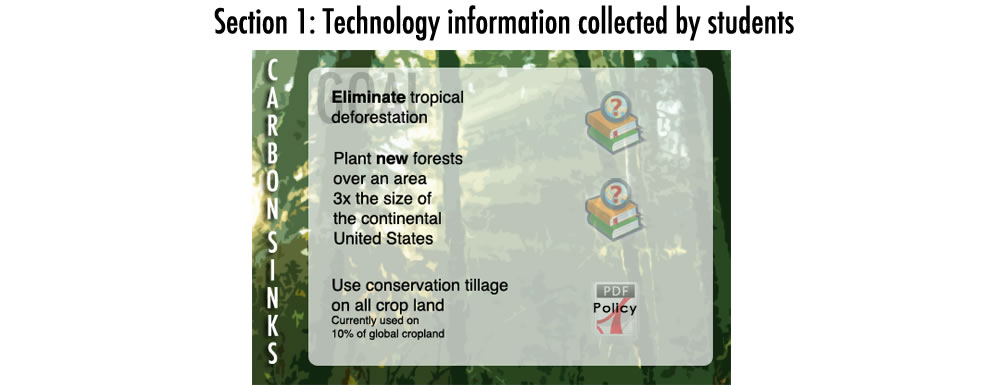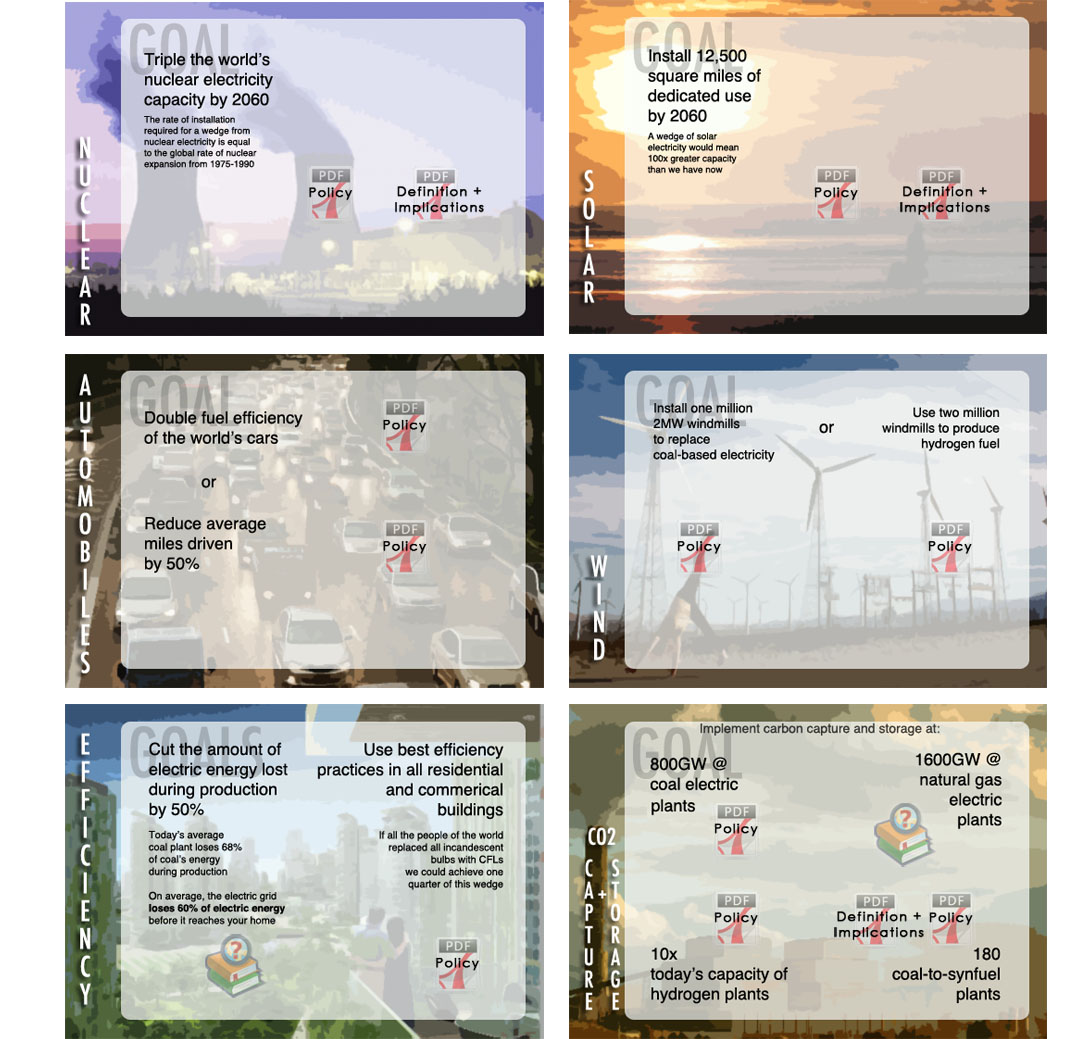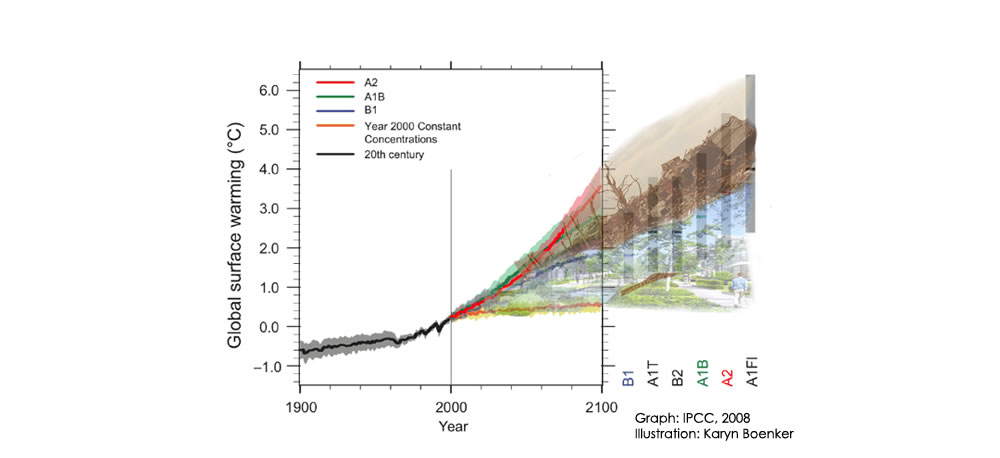
The objective of this assignment was to learn about technologies for reducing emissions of carbon dioxide. Students also investigated technologies that create carbon sinks (storage system that removes carbon from the atmosphere) that have been implemented at a commercial level for several years (Section 1).
Each student selected one strategy listed in the 2004 Science article by Pacala and Socolow (more details in Section 2). They were given the task to evaluate the liklihood various technologies could achieve a single stabilization wedge of -25 billion tons of carbon dioxide (CO2) over 50 years.
For each strategy students gave a 5-minute presentation and provided a handout with the following information:
(1) Description of the technology;
(2) Quantification of its emission reduction/sink enhancement potential;
(3) An assessment of global adoption of this technology.
Students were asked for permission to post their work. The collection of documents below represents all authorized content.



Section 2: Brief overview of literature guiding the assignment
"Stabilization Wedges: Solving the Climate Problem for the Next 50 Years with Current Technologies," by Stephen Pacala and Robert Socolow, 2004
Humans release fossil fuel emissions into the atmosphere when we extract oil, gas and coal from below the Earth’s surface. These are only some of the many greenhouse gases that end up distributed around the planet. Greenhouse gases are also stored in our oceans, soil, ice and trees. Since the industrial age our greenhouse gas emissions emissions have been increasing at an unusual rate.
At our current pace, we are set to double the amount of emissions in the atmosphere by 2100. The future attached to this decision holds larger, more destructive disasters like drought and forest fires. Health problems are escalated as clean air and water become precious resources. Sea level rise is the most certain impact. With more than a third of the world’s population within 100 miles of a shoreline, climate refugees could pose serious security issues.
Yet, we are not there yet, there is still time to act. Pacala and Socolow proposed 15 technolgoies with the potential to take the human race into a more sustainable future, where we start reducing emissions today. Each technologies is weighed against the same goal, which has been simplified with the image of a wedge that represents an specific amount of emission reductions. 
The chart below outlines possible warming scenarios for our future. The course we take is dependant on the amount of action taken to address global climate change. The chart has been dramatized to display creative dipictions of what the two most extreme scenarios might look like, if they were to occur as predicted. 
IPCC, Intergovernmental Panel on Climate Change: Fourth Assessment Report Summary for Policymakers United Nations
Framework Convention on Climate Change. (January 01, 2008). International Legal Materials, 47, 1, 99.
Pacala, S. and R. Socolow. 2004. Stabilization Wedges: Solving the Climate Problem for the Next 50 Years with Current
Technologies. Science., 305 (5686): 968-972





